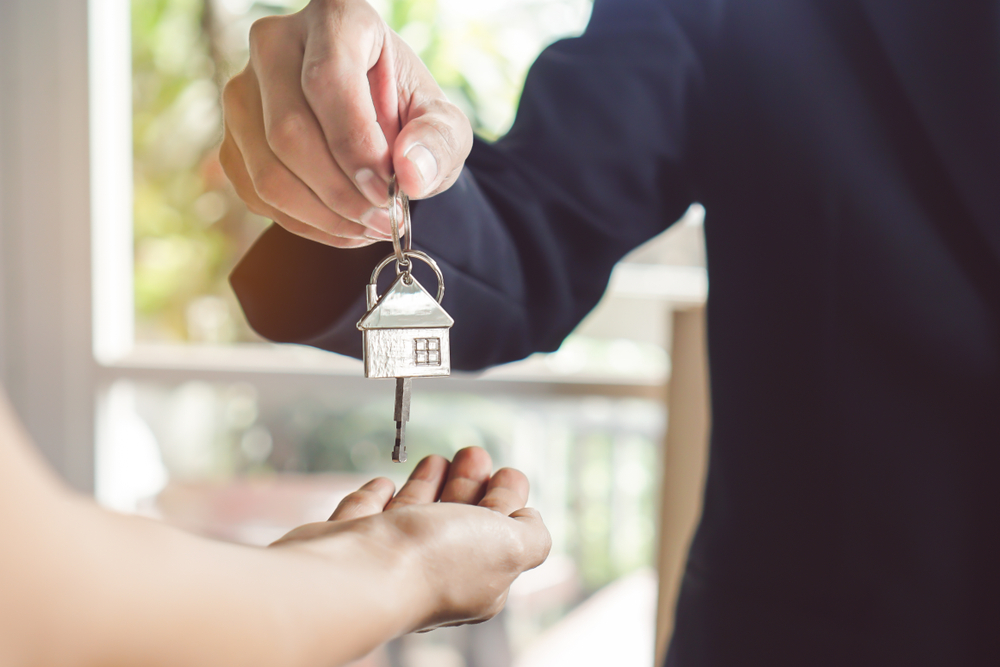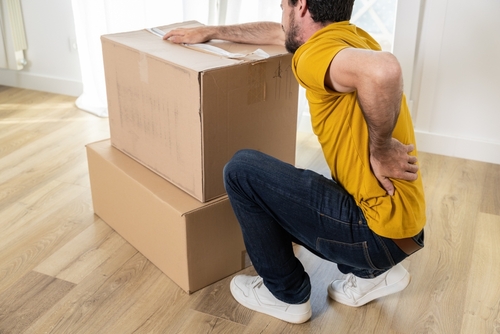
Accidents can happen anywhere, but when they occur on a rental property, it's natural to wonder, "When is a landlord liable for tenant injuries?" The answer often lies in specific details like duty of care, awareness of the hazard, and whether they acted or failed to act in a reasonable manner. But these cases are rarely black and white.
These gray areas create enough confusion to leave many tenants uncertain about their rights and when they can pursue compensation.
Fortunately, insights from experienced personal injury lawyers in Minnesota can help you understand when and how you can protect your right to the justice and compensation you deserve.
What Is Landlord Liability?
At its core, landlord liability falls under an area of law known as "premises liability." This means landlords have a legal duty to ensure that the spaces they rent out are reasonably safe for tenants and their guests. But what does "reasonably safe" even mean?
Generally speaking, landlords are expected to maintain their properties in a way that prevents foreseeable harm. Liability in Minnesota is based on whether a landlord acted reasonably to prevent known dangers or failed to fix hazards they should have known about. They don't have to guarantee absolute safety, but they should address hazards that a reasonable person would recognize as dangerous. If they fail to meet this standard and someone is injured, they may be liable for the damages.
Common Acts of Negligence That May Make a Landlord Liable for Tenant Injuries
Many accident injuries result from common hazards that a landlord could reasonably prevent if proper care had been taken. Here are just a few examples of situations where negligence might expose a landlord to liability:
- Unsafe staircases, such as loose railings, broken steps, or poor lighting
- Broken locks or security features, which could lead to criminal activity or injury
- Leaky ceilings resulting in mold-related health concerns or slip-and-fall accidents
- Electrical hazards, including faulty or outdated wiring
- Slip-and-fall risks, such as icy walkways or unaddressed spills in common areas
- Fire safety concerns like missing smoke detectors or blocked emergency exits
This list is not exhaustive. Many other factors can contribute to unsafe conditions that may give you grounds to recover compensation for harm you've experienced.
Speaking with a personal injury attorney who has handled premises liability cases can help you understand your rights, Can You Claim Compensation based on the circumstances, identify signs of negligence, and determine the best path forward to seek justice for your injuries.
What Must You Prove to Hold a Landlord Liable for Injuries in Their Building?
Understanding when a landlord is liable begins with the concept of negligence. For a landlord to be held responsible for tenant injuries, four main elements must typically be proven:
- A duty of care existed. Landlords owe a duty of care to their tenants. This includes ensuring that common areas like hallways, staircases, and building entrances are safe and free from predictable hazards.
- The landlord violated that duty through negligence. The tenant must show that the landlord ignored or failed to address known risks. For instance, if the landlord knew of loose carpeting on a staircase but didn't repair it, this may indicate negligence.
- The negligence caused an injury. There must be a direct connection between the landlord's negligence and the injury. For example, the landlord may be liable if a tenant trips on the loose carpeting mentioned above.
- The injury resulted in actual losses. This could include medical bills, lost wages, or emotional harm like pain and suffering.
These four steps form the foundation of many successful personal injury cases related to landlord liability. However, timing and documentation are critical in these cases.
What Injuries Can a Landlord Be Liable For?
When landlords neglect their duty to ensure safe living conditions, tenants can suffer a wide range of injuries. Settlement Taking so Long is a common frustration in these cases, often caused by disputes over liability, medical documentation delays, or negotiations with insurers. While many factors influence settlement amounts, injuries that lead to severe, life-altering consequences often recover the highest compensation.
Traumatic Brain Injuries (TBIs)
Traumatic brain injuries are among the most serious and life-altering injuries a tenant can face. The Centers for Disease Control and Prevention (CDC) estimates that TBI-related emergency department visits, hospitalizations, and deaths exceed 223,000 annually. Types of TBI injuries you may be able to hold a landlord liable for include but are not limited to:
- Concussions and post-concussive syndrome
- Hemorrhages or brain bleeds
- Contusions (bruising of the brain)
- Skull fractures
TBIs often require extensive medical treatment, rehabilitation, and long-term care, making compensation vital to address the financial burden. How Much Will I Get for Pain and Suffering After a TBI depends on factors like the severity of your injury, impact on daily life, and long-term prognosis. If your injury stems from neglected property maintenance, falls caused by unsafe staircases, inadequate lighting, or icy walkways, pursuing compensation could be key to recovering the justice and compensation you deserve.
Spinal Cord Injuries

Spinal cord injuries can occur when a tenant slips on an icy sidewalk, falls from a broken balcony, or crashes down unsafe stairs. According to the National Spinal Cord Injury Statistical Center, around 17,900 new spinal cord injuries occur annually in the United States. These injuries can range in severity and include conditions such as:
- Complete or partial paralysis
- Herniated discs
- Fractures or dislocations in the vertebrae
- Chronic nerve damage
These injuries often lead to permanent disability or chronic pain, affecting every aspect of a person's life. Understanding if the landlord failed to address preventable hazards can help build a premises liability case that seeks meaningful compensation for these losses.
Burn Injuries and Fire-Related Harm
Burn injuries are another devastating outcome of landlord negligence. Fires caused by faulty wiring, missing smoke detectors, or locked emergency exits can quickly become life-threatening. According to the National Fire Protection Association, U.S. fire departments responded to 86,000 rental property fires in 2022 alone.
Burn-related injuries that may be eligible for compensation include but are not limited to:
- First-, second-, and third-degree burns
- Smoke inhalation injuries
- Respiratory damage due to toxic fumes
- Injuries sustained during forced evacuations
Burn injury compensation may help cover costs for skin grafts, rehabilitation, and psychological care in the aftermath of such tragedies. A thorough investigation of the landlord's role in fire safety can determine whether negligence contributed to the harm.
Broken Bones and Fractures
While broken bones are common injuries, they can have long-term impacts, especially if complications like improper healing or infections arise. These injuries often occur under circumstances like tripping over uneven flooring, falling due to poorly maintained railings, or slipping in common areas. Specific fractures landlords may be liable for include:
- Hip fractures, particularly in older tenants
- Wrist and hand fractures from bracing during falls
- Ankle and leg fractures from structural collapses
- Rib fractures due to falls or accidents caused by unsafe conditions
Securing compensation for broken bones involves demonstrating how negligence, such as ignoring property hazards, created the conditions for the injury. Even seemingly minor fractures can lead to costly medical expenses and lengthy recovery periods.
Respiratory Health Issues Due to Mold or Poor Ventilation
Respiratory illnesses can arise in properties with unchecked issues like water leaks, mold, or lack of proper ventilation. The Environmental Protection Agency (EPA) links mold exposure to chronic respiratory problems such as asthma and hypersensitivity pneumonitis. Common conditions aggravated by negligent property maintenance include:
- Asthma attacks triggered by allergens or mold spores
- Chronic bronchitis or other infections
- Allergic reactions causing sinus and respiratory blockage
- Long-term conditions stemming from poor air quality
While these issues may develop over time, documentation of poor living conditions and ongoing health impacts can establish a link between the landlord's negligence and the tenant's suffering. A personal injury claim may hold the landlord accountable for preventable illnesses.
Minnesota Landlord Liability Laws Every Tenant Should Know
While landlord responsibilities are largely similar across the United States, tenants in Minnesota are protected by specific laws. If you live in the state, here are a few important details to keep in mind:
- Landlords are required to keep properties habitable. Minnesota's "Covenant of Habitability" ensures basic conditions like working plumbing, heat, and safe common areas. Violations of these standards can create liability issues.
- Timelines for addressing repairs can matter. Minnesota law allows tenants to request repairs in writing. If landlords don't act within a reasonable timeframe, this could strengthen a tenant's claim in an injury case.
- The statute of limitations for personal injury claims is generally six years. If you're pursuing damages for a landlord's negligence, you typically have six years from the date of the injury to file a claim in Minnesota. It is important to speak with an attorney as soon as possible, however, because certain factors or situations can have shorter statutes of limitations.
Understanding the legal framework is helpful when considering whether to proceed with a claim. It's also worthwhile to explore factors affecting your case during a free consultation with an experienced premises liability attorney.
When Is A Landlord Not Liable for Tenant Injuries?
While landlords carry significant responsibilities, there are several scenarios where they may not be liable for injuries:
- Tenant responsibility for the hazard. If the tenant created or failed to report the issue that caused the injury, this may shift some (or all) responsibility to the tenant. For instance, if a tenant spills water in their apartment and slips on it without cleaning up the area, the landlord would likely not be at fault.
- Hazards outside the landlord's control. Liability may not apply in some cases if the injury results from factors beyond the landlord's control, such as natural disasters.
- Lack of notice. Landlords may not be liable if they didn't have reasonable notice of the issue. However, whether or not they "should have known" about it is often a key contested point in these cases.
- Lease terms placing responsibility on the tenant. Some lease agreements include terms that assign specific maintenance obligations to tenants. If injuries stem from something the tenant agreed to manage, the landlord may not be responsible.
These exceptions highlight why it can be so beneficial to have legal guidance when sorting through a potential claim. Who Is Liable isn’t always immediately clear, and because these situations are rarely black and white, what may initially appear as something you have no legal recourse for could actually be a case where the landlord is responsible.
What Can Tenants Do After an Injury To Protect Their Right To Compensation in a Personal Injury Case?
If you've been injured on a rental property, taking the following steps can help protect your rights and increase your chances of a successful claim:
- Document the hazard and injury. Take photos of the dangerous conditions and gather any medical records related to your injury. Evidence is key to proving your case.
- Inform your landlord in writing. Notify your landlord about the issue as soon as possible. Written documentation provides a clear timeline of events.
- Collect witness information. If neighbors or visitors saw the accident, ask for their contact information in case their statements are needed later.
- Consult legal support. Lawsuits involving landlord liability can be complex, and working with personal injury lawyers in Minnesota can help clarify your best options for pursuing justice and compensation.
- Stay within the statute of limitations. Remember that Minnesota law usually provides up to six years to file a personal injury claim. However, acting sooner can prevent evidence from being lost or overlooked.
Every step you take, from documenting the hazard to seeking professional advice, plays a crucial role in holding negligent landlords accountable. If you're unsure how to proceed or want to ensure your rights are fully protected, consulting a personal injury attorney can offer clarity and direction as you seek justice for your injuries.
Do You Need Help Holding A Landlord Liable For Your Injuries?
Contact Fields Injury Law Firm for Comprehensive and Compassionate Legal Support.
When accidents happen on rental properties, tenants often face tough questions about who is responsible and whether they should pursue legal action. Knowing when a landlord is liable for tenant injuries can empower you to act with
confidence.
If you've been injured and believe landlord negligence played a role, Fields Injury Law is here to help. Contact our experienced personal injury and premises liability attorneys online or at (612) 206-3495 to explore your options for seeking justice and fair compensation.

